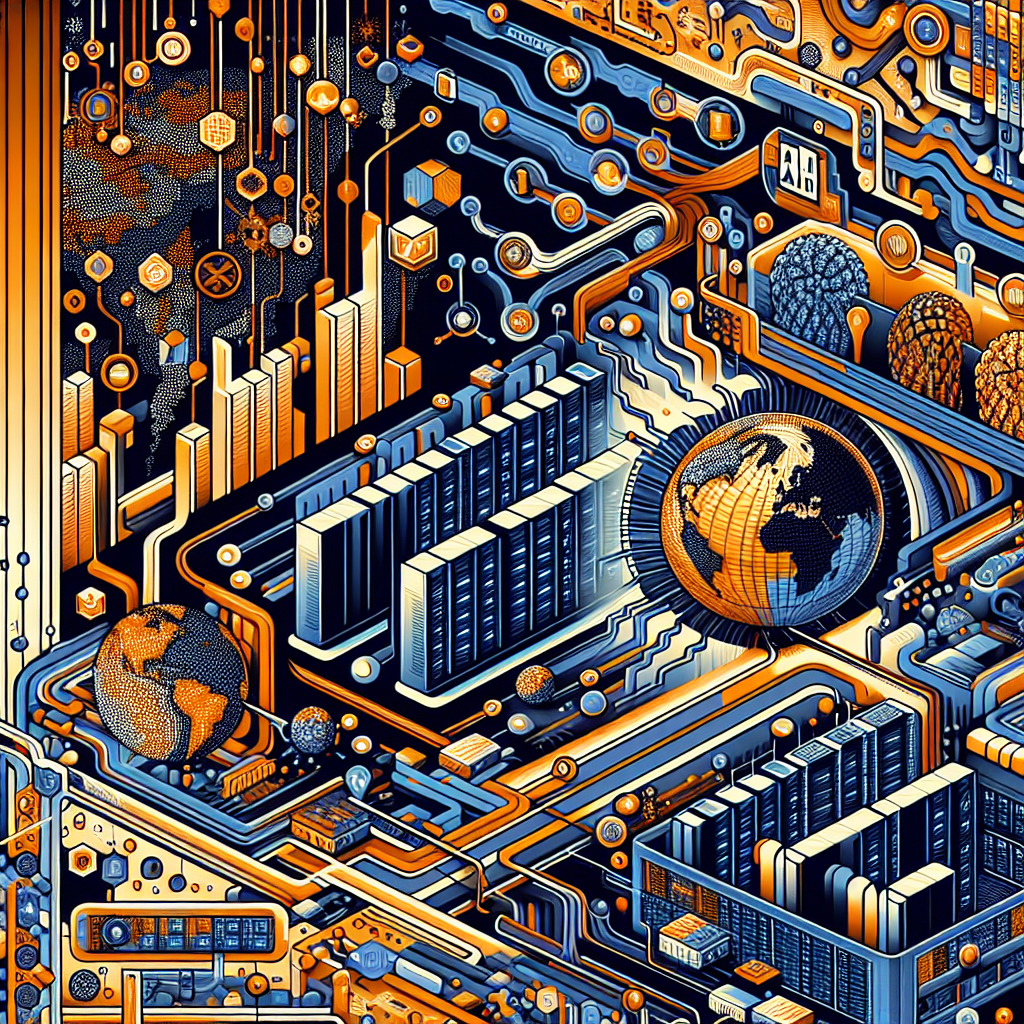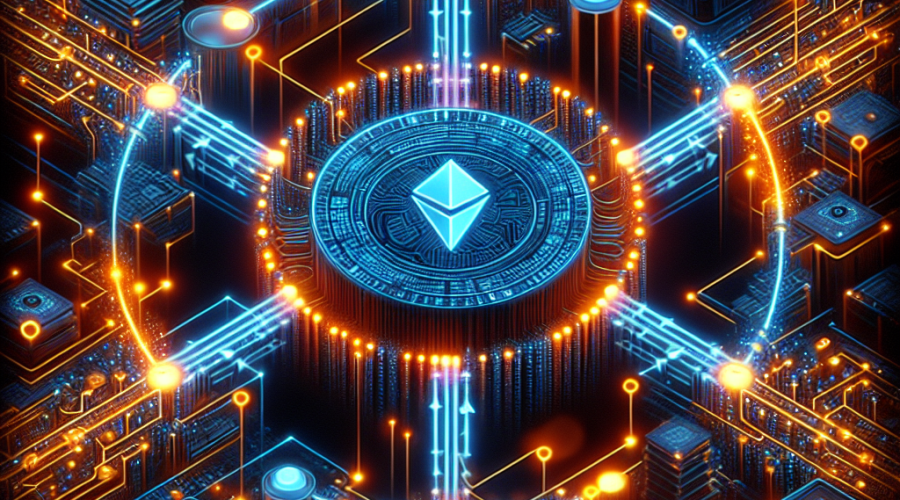Foxconn Navigates China’s Rare Earth Export Curbs Amid Soaring AI Server Demand
Overview of Foxconn’s Latest Performance and Market Position
Foxconn Technology Co., Ltd., the world’s largest electronics manufacturer and a linchpin in the global technology supply chain, saw its shares climb by 3.4% to close at TWD 66.90 this Thursday. The jump in Foxconn’s stock price followed comments from company leadership that China’s tight new restrictions on rare earth element exports are having only limited short-term effects on its sprawling manufacturing operations. Despite shifting regulatory currents, Foxconn continues to ride a wave of demand for artificial intelligence (AI) infrastructure, allowing the company to post record revenues even as the broader electronics sector faces mounting geopolitical headwinds.
China Tightens Control on Rare Earth Exports
In recent weeks, the Chinese government deepened its controls on the export of rare earth elements—materials that are critical to semiconductor manufacturing, advanced electronics, and a host of defense and green technologies. Specifically, China added five new rare earths—holmium, erbium, thulium, europium, and ytterbium—to its already expansive export control list. With China responsible for approximately 90% of the world’s production of rare earth magnets, this move paints a complex picture for electronics and high-tech manufacturers globally.
Under China’s revised export policy, any material containing even 0.1% of heavy rare earth content now requires a special export license. The implications are broad: as these strategic materials underpin not just smartphones and laptops but also cutting-edge AI hardware, wind turbines, and military systems. China’s strengthened regulations on rare earths follow previous curbs in April that initially targeted goods containing heavy rare earth elements, particularly those used in semiconductors and advanced magnets.
Immediate Impact on Foxconn’s Operations
Addressing concerns at a press briefing in Taipei, Foxconn Chairman Young Liu assured investors and the market that the company’s supply chain has, to date, not been significantly affected by the expanded Chinese controls. “We are closely monitoring the developments, but for now, the impact on our supply chain is minimal,” Liu said, emphasizing Foxconn’s global procurement capabilities and the relatively small share of rare earths in the value of their core products.
Foxconn is perhaps best known for assembling Apple’s iPhones and serving as the chief manufacturing partner for technology giants like Nvidia, but its product lines are vast. Many of Foxconn’s products, such as server cooling fans and storage systems, use limited quantities of rare earth elements. The company has worked to diversify suppliers for these components and maintain flexible sourcing arrangements.
Nevertheless, Liu noted that if restrictions expand further or become more rigorously enforced, the situation could quickly shift. For now, however, Foxconn’s agility and preparations have shielded it from the worst effects, especially as licenses for most rare earth magnet-related exports have resumed after the initial implementation shock in April.
Foxconn’s Financial Momentum: Record Revenues Driven by AI Demand
Beyond supply chain concerns, Foxconn’s recent financial results paint a story of resilience and strategic foresight. The company reported consolidated sales of NT$606.5 billion (approximately US$19.9 billion) for August 2025, marking an impressive 10.6% increase compared to the same period last year. This surge is being propelled by the rapid expansion of hyperscale data centers worldwide and the corresponding demand for high-performance AI servers — areas in which Foxconn has established itself as a market leader.
AI infrastructure, particularly servers built to support generative AI, machine learning, and massive cloud services, lies at the heart of Foxconn’s growth trajectory. The company anticipates a 170% year-over-year increase in AI server shipments for Q3, up from a staggering 60% growth in Q2. Analysts attribute this to Foxconn’s central role in the AI supply ecosystem, as major cloud providers, tech platforms, and enterprise customers rapidly upgrade their data centers to accommodate new, resource-hungry workloads.
Though geopolitical uncertainty and supply bottlenecks persist, Foxconn’s ability to capitalize on the global AI boom has more than offset these risks in the short term.
Broadening the Supply Chain: Global Diversification Initiatives
However strong Foxconn’s short-term outlook may be, neither Foxconn nor the broader electronics sector can ignore the realities of relying on a single source—China—for critical raw materials. Recognizing this, Foxconn and other leading manufacturers are accelerating efforts to diversify their supply chains.
Across Europe and North America, companies and governments are investing in new rare earth mining and processing facilities to reduce dependence on China. For instance, Neo Performance Materials is in the process of building a state-of-the-art neodymium-iron-boron (NdFeB) magnet plant in Estonia, with a planned annual capacity of 2,000 tons by 2025. Such endeavors signal the start of a slow but necessary shift in the industrial landscape.
Yet, analysts warn that these up-and-coming production sites will take years to reach the scale, quality, and cost efficiency of the Chinese supply chain. In the meantime, electronics manufacturers must continue to navigate short-term volatility and adjust their sourcing strategies accordingly.
China’s latest export restrictions will largely take effect in December 2025, giving multinational manufacturers a crucial window to reassess their procurement, logistics, and inventory management practices before more stringent regulations are enforced.
Strategic Implications for the Tech Industry
The tightening of China’s rare earth exports is part of a broader trend of resource nationalism, as nations seek to secure access to technological “chokepoints” that can influence the development of sensitive and strategic industries. For Foxconn, which operates sprawling factories across Asia and increasingly in the Americas and Europe, balancing the need for supply chain reliability, cost competitiveness, and regulatory compliance will be a defining challenge in the years ahead.
Foxconn’s experience underscores a key lesson for the global tech sector: in a world marked by rising geopolitical uncertainty and ongoing technological change, diversification is no longer a preference — it is a necessity. Companies must continually assess the vulnerabilities in their manufacturing and sourcing strategies, invest in redundancies, and remain agile enough to respond to sudden regulatory shocks.
Conclusion: Foxconn Poised for Future Challenges and Opportunities
Foxconn’s upbeat stock performance and robust Q3 financials are testament to the company’s strategic resilience amid stormy geopolitical weather. As AI drives a once-in-a-generation upgrade cycle for data centers and high-performance computing, Foxconn’s role at the center of the supply chain remains unchallenged — at least for now.
Even as China tightens its control over rare earth materials critical to modern electronics, Foxconn’s proactive approach and continuous supply chain refinement have mitigated immediate risks. Industry-watchers and investors alike will continue to scrutinize developments closely, knowing that the future of the global electronics ecosystem increasingly hinges on the ability to adapt to fast-evolving regulatory regimes and the relentless march of technological innovation.
Key Takeaways for Industry Stakeholders
- Foxconn’s proactive supply chain management and global procurement have lessened the immediate impact of China’s expanded rare earth export controls.
- The company’s record-setting third-quarter revenue is driven primarily by burgeoning demand for AI servers and infrastructure.
- While China remains dominant in rare earth processing, new diversification projects in Europe and North America are underway, albeit not yet at a scale to threaten China’s market position.
- Both investors and technology executives should expect ongoing volatility in the raw material supply chain as governments use export controls as geopolitical tools.
- The evolving landscape presents both risks and opportunities for manufacturers willing to invest in flexibility and supply chain innovation.


















